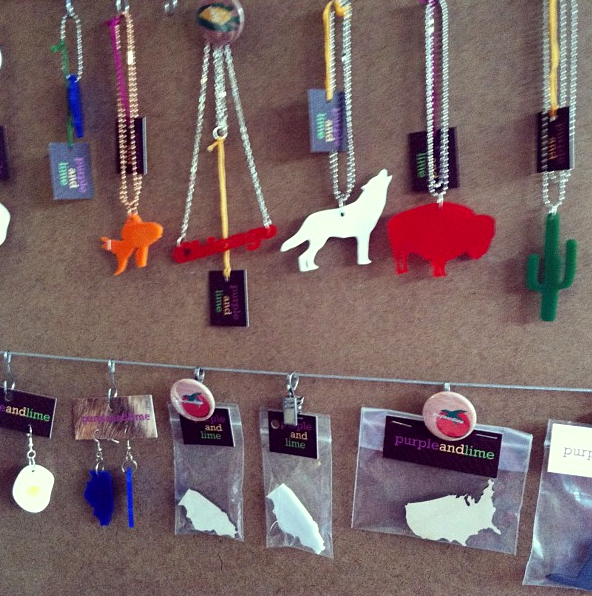You’ve started selling your handmade goods at stores on a consignment basis. Fantastic! But your job's not done yet.
Once you've landed a consignment contract (check out this IndieMade resource article for the lowdown on how to accomplish that), you need to stay in touch with the stores and keep communicating. After years of consigning my own crafty products, I gathered together the following tips to avoid any awkwardness or frustration.

Purple and Lime jewelry on consignment at Replica Chicago.

How To Build an Artist Website
Sign up for our newsletter and get the book How to Build an Artist Website for free!
Respect Their Hours
Most stores will include preferred drop-off hours on their consignment contracts. (If you're new to consigning, and aren't sure what all those contract terms mean, this IndieMade resource article will help demystify some of those terms for you!) Others will send this info out in newsletters. Make sure you find out the days and times they want artists to stop by, and abide by that schedule. Stores usually prefer weekdays, because they are often less busy with customers than on the weekends. And if you need to chat with the owner or buyer about anything, stopping by or calling within their preferred hours will make it easier to find time to talk.
Restock When Needed
It's important to restock your handmade merchandise regularly, especially right before the holidays and other busy times of year when they need more product on the shelves. I usually send out a little heads-up email so they know when to expect me in the shop. Don't overwhelm a store with too many items, but it's totally fine to bring more of a popular seller or recently sold piece. Also remember to include inventory lists when dropping off more goods. Some stores provide a standard one, while others prefer you write your own. If you have a brand new kind of item or product line, I recommend asking if it's OK to bring to the store. You don't want to drop off pieces that compete with another artist at the shop, or they might not have any more display room at the moment.
Pick Up Old Merchandise
Some stores will contact you as a reminder to pick up old items, but if not, it's fine to ask. Seasonal products, like scarves and mittens, will definitely need to be picked up once the weather gets warmer. They also take up a lot of storage room in a shop so it's best to take them with you. Trading out unsold merchandise can often do the trick to increase your sales again. The freshness of new items can appeal to regular customers who have already seen the old pieces.
Check In Occasionally
Store owners get super busy just like handmade artists, so it's perfectly OK to email or contact them if it's been a while since you've spoken. If it's a smaller store or one where you just have the occasional sale, this might even remind them to pay you or have you restock! And you never know what kind of opportunities will arise from the check-in: trunk shows, sales, custom orders, and more. I've found a quick email is usually the best way to go. The random pop-in visit can sometimes be inconvenient.
Spread the Word
Always be grateful and promote the stores that carry your line through social media, mailing lists, and more! A Facebook fan page, Pinterest boards, and Twitter account are free and easy ways to let the public know that they can shop at certain boutiques for your products. These posts will get picked up by others (retweeted or shared), giving more press to the stores and your handmade company at the same time.
These tips to increase revenue and build strong business relationships with the stores that carry your work. Not sure whether consignment is right for you, or looking for more info on how to persuade stores to carry your handmade work? Visit this IndieMade resource article to learn how to find the right stores for your products!




